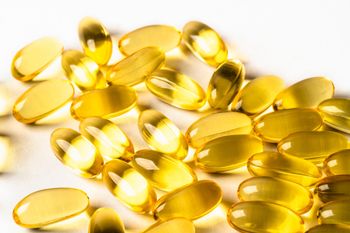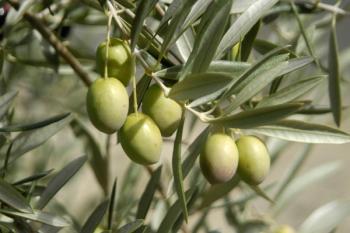
Turmeric Adulteration, Test Methods Examined in New Botanical Adulterants Bulletin
The bulletin discusses adulteration of turmeric root, turmeric extracts, and curcuminoids with related species, artificial colorants, and synthetic curcuminoids, and details analytical approaches to detect those adulterants.
A new Botanical Adulterants Bulletin from the Botanical Adulterants Prevention Program (BAPP) explores the growing issue of turmeric (Curcuma longa) adulteration. The bulletin discusses adulteration of turmeric root, turmeric extracts, and curcuminoids with related species, artificial colorants, and synthetic curcuminoids, and details analytical approaches to detect those adulterants.
BAPP is a nonprofit organization created by the American Botanical Council (ABC; Austin, TX), the American Herbal Pharmacopoeia (Scotts Valley, CA), and the University of Mississippi’s National Center for Natural Products Research (NCNPR; University, MS). As with other BAPP bulletins, the current turmeric bulletin was extensively peer-reviewed, in this case by 18 experts from academia and industry. The bulletin was prepared by Ezra Bejar, PhD, an expert in botanical research in San Diego, CA.
Turmeric has been the number one bestselling dietary supplement ingredient in U.S. natural food stores since 2013, according to a market
According to Bejar, turmeric is particularly susceptible to adulteration because of its widespread use and high cost. At the same time, it is extremely difficult to detect adulteration in turmeric because it is frequently sold in powdered form, rendering it nearly impossible to identify by macroscopic visual inspection. Thus, for unscrupulous manufacturers, mixing the natural curcuminoids with lower-cost botanical ingredients, starches, chalk powder, cassava, and synthetic dyes may be seen as an attractive option. Bejar adds that synthetic curcumin can be sold for roughly one-third the cost of natural curcuminoids.
Some of the earliest reports of turmeric adulteration include adulteration with other Curcuma species, starches, and dyes, Bejar writes in the bulletin. More recent reports of adulteration of turmeric extract include the addition of undeclared synthetic curcumin or mixtures of synthetic curcuminoids.
However, one of the biggest adulteration issues for curcumin, he writes, is adulteration with similarly colored synthetic and natural ingredients. These common adulterants include botanical relatives like Curcuma zedoaria, a wild relative of turmeric, also known as white turmeric, which is widely available and closely resembles turmeric. Colorants like metanil yellow (sodium 3-[4-anilinophenylazo] benzenesulfonate), a synthetic food color and additive, closely mimics the color appearance of curcumin, Bejar notes. Synthetic dyes like lead chromate, acid orange 7, and Sudan Red G have also been used to adulterate natural curcumin, while yellow soapstone powder, a natural mineral, may be used as well.
Stefan Gafner, PhD, chief science officer of ABC and technical director of BAPP, explained in a press release why adulteration of turmeric with synthetic colorants is highly concerning: “The use of colorants to make the turmeric root visually more attractive is of particular concern. Many of the yellow or orange colorants, such as lead chromate or metanil yellow, may represent a health risk. Since daily dosages of several grams of turmeric powder are recommended for health benefits, use of adulterated turmeric products may lead to an intake of excessive amounts of these colorants.”
Some of the potential health risks associated with the colorant metanil yellow, for example, may include neurotoxicity, hepatocellular carcinoma, tumor development, deleterious effect on gastric mucin, and lymphocytic leukemia, according to the review authors citing animal studies. Bejar points out that metanil yellow is not approved as a food colorant by the UN FAO/WHO Codex Alimentarius or by FDA. Lead chromate and Sudan dyes, meanwhile, have been classified by the International Agency for Research on Cancer (IARC) as “group 3,” meaning that available studies “do not permit conclusions regarding the causality between exposure and cancer occurrence.”
Bejar adds what while there is a slight possibility of accidental adulteration with botanical ingredients like C. zedoaria, the detection of other ingredients like cassava, talc powder, starches, yellow dyes, minerals, or synthetic curcumin in the ingredient indicates “economically motivated adulteration.”
Bejar states that while it can be difficult to detect adulteration in turmeric, and in turmeric powders in particular, there are effective methods for detecting various adulterants. Some of those testing methods include, among others, physical and colorimetric tests using reagents to identify chalks, yellow soapstone, starches, and dyes; a rapid thin-layer chromatography (TLC) technique developed to distinguish C. longa from other Curcuma species; two-dimensional high-performance liquid chromatography (HPLC) to detect turmeric adulteration with dyes; and a laser-induced breakdown spectroscopy, also used to detect the presence of dyes.
Mark Blumenthal, founder and executive director of ABC, and director of BAPP, stated in the press release that although many companies in the natural products industry do produce high-quality, authentic, reliable turmeric ingredients, it is also important to be aware that there are companies who aim to make a quick profit by using adulterants. “The BAPP turmeric bulletin is designed to assist purchasing departments and quality control laboratories in the herb, spice, and dietary supplement industries in assuring that responsible companies purchase only authentic turmeric ingredients,” he said.
This turmeric bulletin is the 14th peer-reviewed bulletin in BAPP’s series of Botanical Adulterants Bulletins, and is the 41st peer-reviewed publication published by the program. All the program’s publications, which includes a quarterly e-newsletter, the Botanical Adulterants Monitor, highlighting scientific publications related to botanical authenticity, are freely accessible to all ABC members, registered users of the ABC website, and all members of the public on the Program’s
Also read:
Newsletter
From ingredient science to consumer trends, get the intel you need to stay competitive in the nutrition space—subscribe now to Nutritional Outlook.





